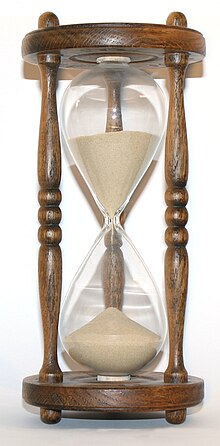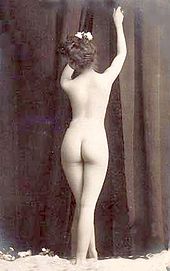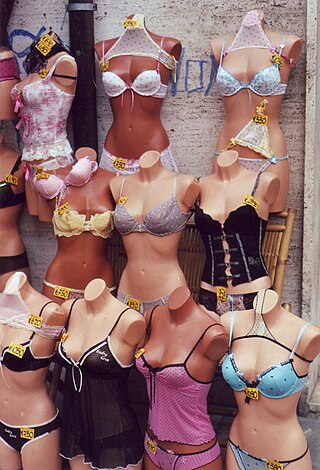
Lingerie is a category of primarily women's clothing including undergarments, sleepwear, and lightweight robes. The choice of the word is often motivated by an intention to imply that the garments are alluring, fashionable, or both. In a 2015 US survey, 75% of women reported having worn "sexy lingerie" in their lifetime.
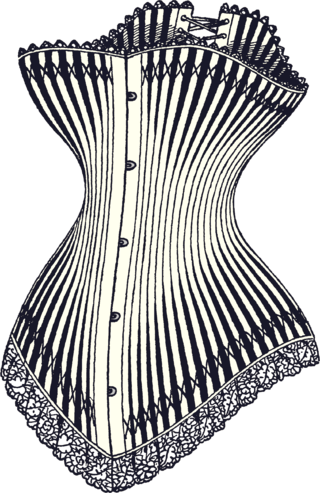
A corset is a support garment worn to hold and train the torso into the desired shape and posture. They are traditionally constructed out of fabric with boning made of whalebone or steel, a stiff panel in the front called a busk which holds the torso rigidly upright, and some form of lacing which allows the garment to be tightened. Corsets were an essential undergarment in European women's fashion from the 17th century to the early 20th century. In the 17th and 18th centuries they were commonly known as "stays" and had a more conical shape. This later evolved into the curvaceous 19th century form which is commonly associated with the corset today. By the beginning of the 20th century, shifting gender roles and the onsets of World War I and II led the corset to be largely discarded by mainstream fashion.
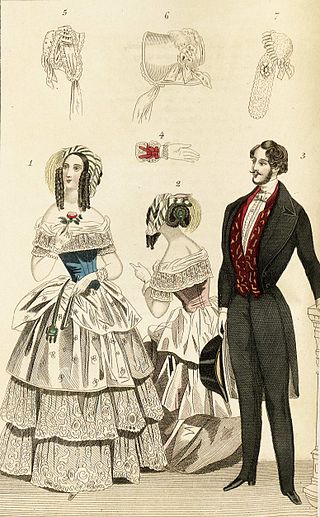
Victorian fashion consists of the various fashions and trends in British culture that emerged and developed in the United Kingdom and the British Empire throughout the Victorian era, roughly from the 1830s through the 1890s. The period saw many changes in fashion, including changes in styles, fashion technology and the methods of distribution. Various movement in architecture, literature, and the decorative and visual arts as well as a changing perception of gender roles also influenced fashion.

The waist is the part of the abdomen between the rib cage and hips. On people with slim bodies, the waist is the narrowest part of the torso.
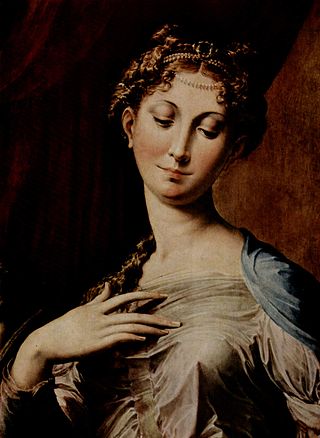
Body proportions is the study of artistic anatomy, which attempts to explore the relation of the elements of the human body to each other and to the whole. These ratios are used in depictions of the human figure and may become part of an artistic canon of body proportion within a culture. Academic art of the nineteenth century demanded close adherence to these reference metrics and some artists in the early twentieth century rejected those constraints and consciously mutated them.
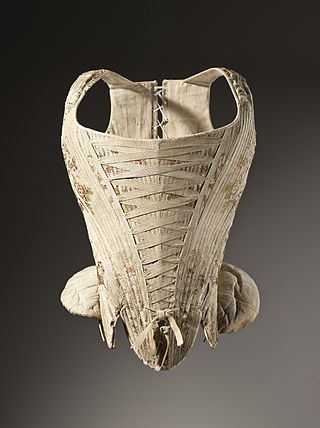
The corset is a supportive undergarment for women, dating, in Europe, back several centuries, evolving as fashion trends have changed and being known, depending on era and geography, as a pair of bodies, stays and corsets. The appearance of the garment represented a change from people wearing clothes to fit their bodies to changing the shape of their bodies to support and fit their fashionable clothing.

Physical attractiveness is the degree to which a person's physical features are considered aesthetically pleasing or beautiful. The term often implies sexual attractiveness or desirability, but can also be distinct from either. There are many factors which influence one person's attraction to another, with physical aspects being one of them. Physical attraction itself includes universal perceptions common to all human cultures such as facial symmetry, sociocultural dependent attributes, and personal preferences unique to a particular individual.

A foundation garment is an undergarment designed to impermanently alter the wearer's body shape, to achieve what some view as a more fashionable figure. The function of a foundation garment is not to enhance a bodily feature but to make it look more presentable.

Bust/waist/hip measurements are a common method of specifying clothing sizes. They match the three inflection points of the female body shape. In human body measurement, these three sizes are the circumferences of the bust, waist and hips; usually rendered as xx–yy–zz in inches, or centimeters. The three sizes are used mostly in fashion, and almost exclusively in reference to women, who, compared to men, are more likely to have a narrow waist relative to their hips.

The waist–hip ratio or waist-to-hip ratio (WHR) is the dimensionless ratio of the circumference of the waist to that of the hips. This is calculated as waist measurement divided by hip measurement. For example, a person with a 75 cm waist and 95 cm hips has WHR of about 0.79.

An hourglass corset is a garment that produces a silhouette resembling an hourglass shape characterized by wide hips, narrow waist, and wide bust.
U.S. standard clothing sizes for women were originally developed from statistical data in the 1940s and 1950s. At that time, they were similar in concept to the EN 13402 European clothing size standard, although individual manufacturers have always deviated from them, sometimes significantly.

Human body shape is a complex phenomenon with sophisticated detail and function. The general shape or figure of a person is defined mainly by the molding of skeletal structures, as well as the distribution of muscles and fat. Skeletal structure grows and changes only up to the point at which a human reaches adulthood and remains essentially the same for the rest of their life. Growth is usually completed between the ages of 13 and 18, at which time the epiphyseal plates of long bones close, allowing no further growth.

Female body shape or female figure is the cumulative product of a woman's bone structure along with the distribution of muscle and fat on the body.

The corset controversy was a moral panic and public health concern around corsets in the 19th century.

Android fat distribution describes the distribution of human adipose tissue mainly around the trunk and upper body, in areas such as the abdomen, chest, shoulder and nape of the neck. This pattern may lead to an "apple"-shaped body or central obesity, and is more common in males than in females. Thus, the android fat distribution of men is about 48.6%, which is 10.3% higher than that of premenopausal women. In other cases, an ovoid shape forms, which does not differentiate between men and women. Generally, during early adulthood, females tend to have a more peripheral fat distribution such that their fat is evenly distributed over their body. However, it has been found that as females age, bear children and approach menopause, this distribution shifts towards the android pattern of fat distribution, resulting in a 42.1% increase in android body fat distribution in postmenopausal women. This could potentially provide evolutionary advantages such as lowering a woman's center of gravity making her more stable when carrying offspring.
Devendra Singh was a professor of Psychology at the University of Texas, known largely for his research regarding the evolutionary significance of human attraction.

Cultural history of the buttocks has included various art forms as well as a sexualization of the buttocks which has occurred throughout history.
Mate preferences in humans refers to why one human chooses or chooses not to mate with another human and their reasoning why. Men and women have been observed having different criteria as what makes a good or ideal mate. A potential mate's socioeconomic status has also been seen important, especially in developing areas where social status is more emphasized.
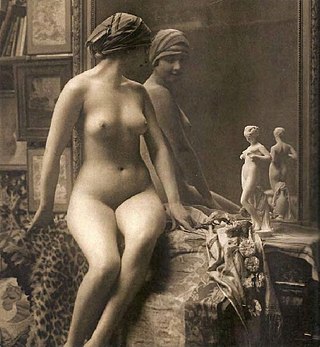
Gynoid fat is the body fat that forms around the lower body, specifically the hips, thighs and buttocks. Gynoid fat in females is used to provide nourishment for offspring, and is often referred to as 'reproductive fat'. This is because it contains long-chain polyunsaturated fatty acids (PUFAs), which are important in the development of fetuses. It is regarded as a physically attractive feature, serving as an indication towards a woman's reproductive potential.
